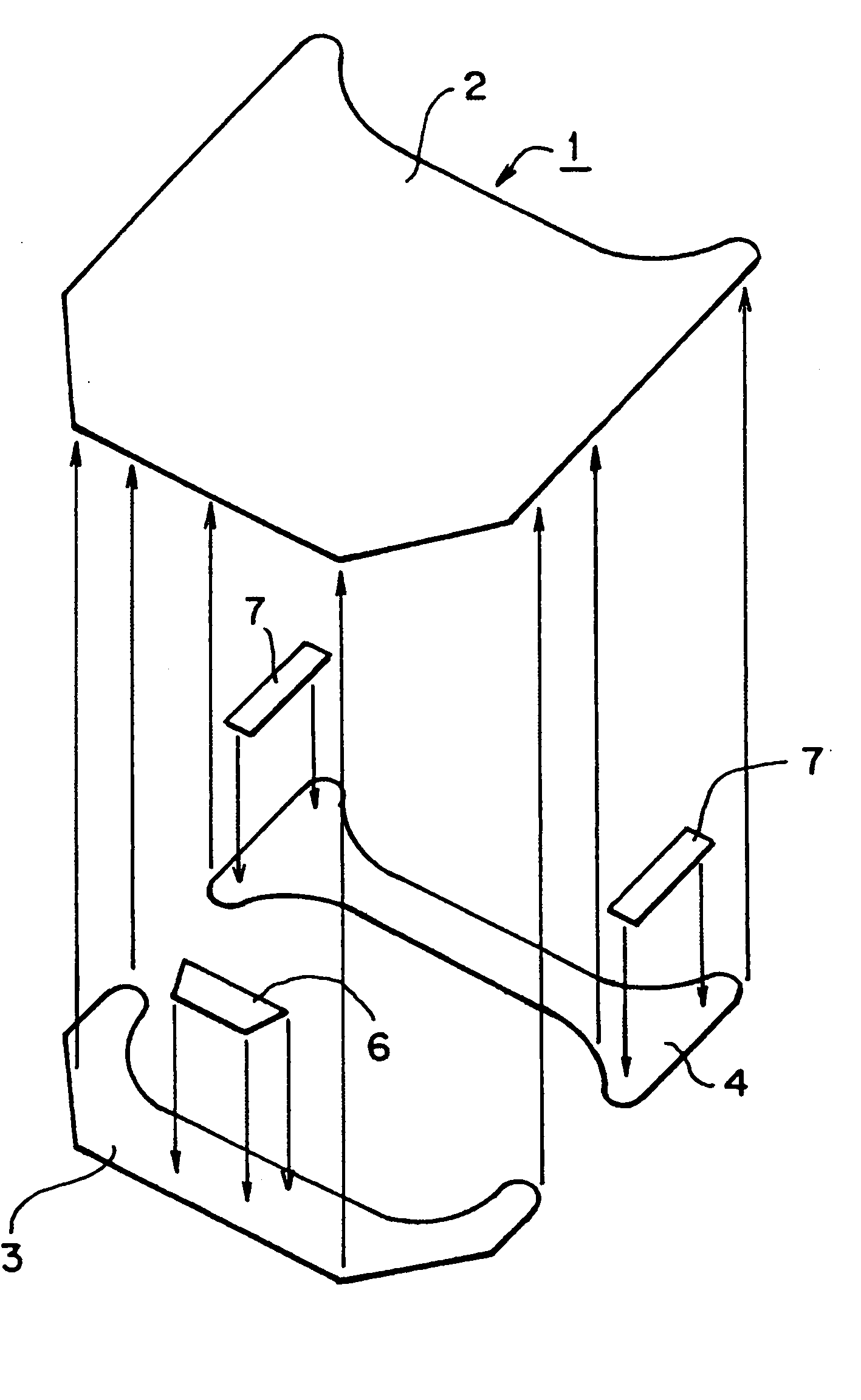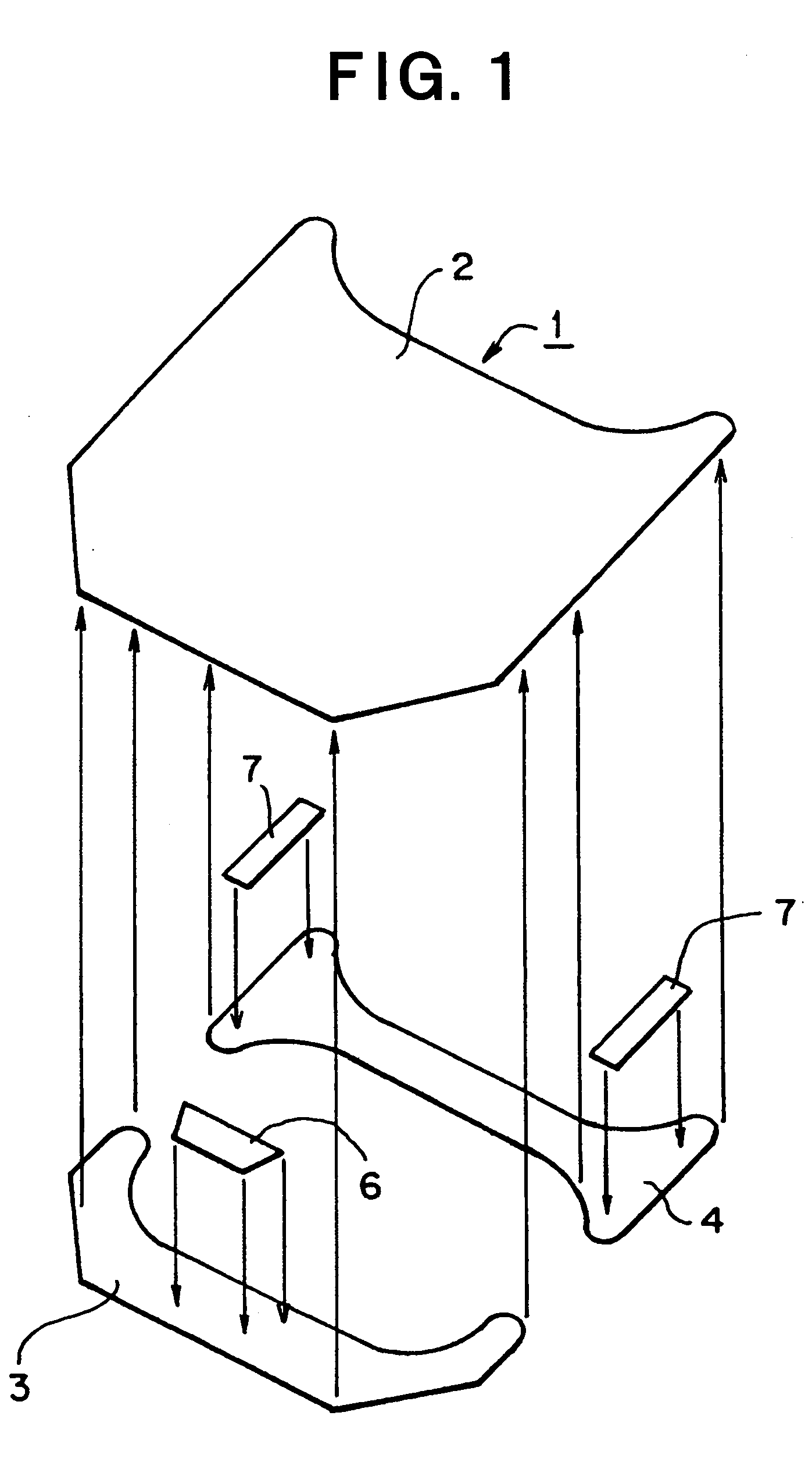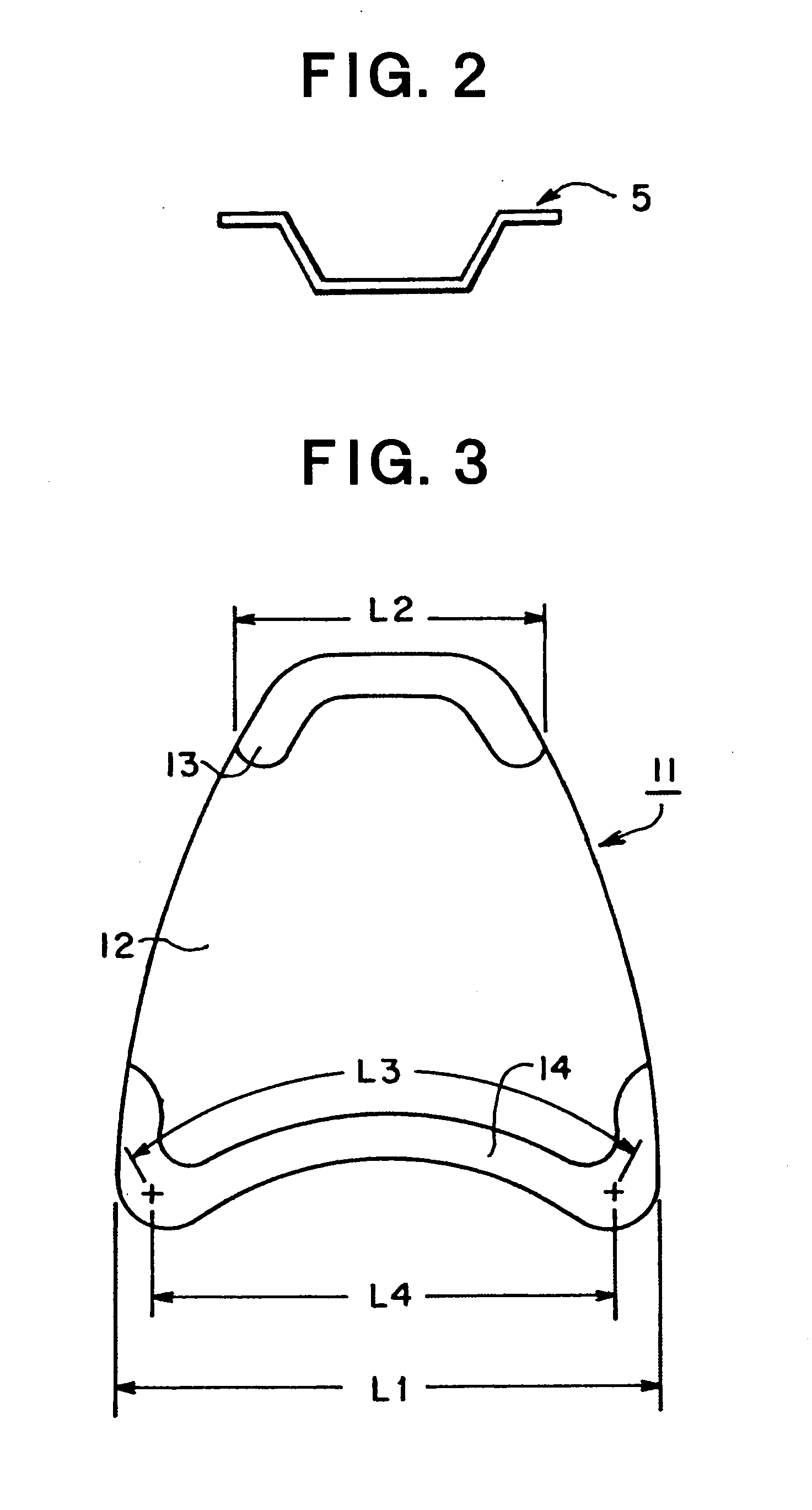Bonnet for Automobile
- Summary
- Abstract
- Description
- Claims
- Application Information
AI Technical Summary
Benefits of technology
Problems solved by technology
Method used
Image
Examples
Embodiment Construction
[0085] Hereinafter, desirable embodiments will be explained referring to the figures:
[0086]FIG. 1 shows a bonnet for an automobile according to one embodiment. In FIG. 1, symbol 1 shows the whole of the bonnet for an automobile, and the bonnet 1 comprises an FRP outer member 2 positioned at a surface side, and FRP front inner member 3 and rear inner member 4 which are joined to the back surface side of the outer member and separated into two parts in a forward and backward direction of a vehicle body. FRP outer member 2 is spread in a plane direction over the entire surface of the bonnet, and formed as a curved shape required depending upon the kind of automobile. This outer member 2 may be formed as an FRP single plate structure, or may be formed as a sandwich structure in which a core material (for example, a core material formed from a foamed material) is interposed between FRP skin plates. Although it is possible to form front inner member 3 and rear inner member 4 as sandwich ...
PUM
 Login to View More
Login to View More Abstract
Description
Claims
Application Information
 Login to View More
Login to View More - R&D
- Intellectual Property
- Life Sciences
- Materials
- Tech Scout
- Unparalleled Data Quality
- Higher Quality Content
- 60% Fewer Hallucinations
Browse by: Latest US Patents, China's latest patents, Technical Efficacy Thesaurus, Application Domain, Technology Topic, Popular Technical Reports.
© 2025 PatSnap. All rights reserved.Legal|Privacy policy|Modern Slavery Act Transparency Statement|Sitemap|About US| Contact US: help@patsnap.com



